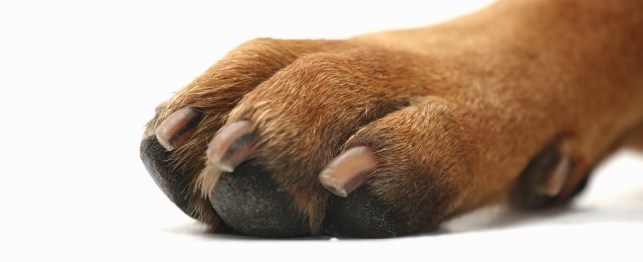
A substance called xylitol is making thousands of dog sick and even causing death, affecting more pets now than ever before, and it's probably in your home right now.
Cases of xylitol poisoning in dogs have increased dramatically in recent years, The Wall Street Journal reported, citing statistics from the Pet Poison Helpline, which received 10 times as many calls relating to xylitol by November 2015 than in all of 2009.
“There are still a lot of dog owners who have never heard of xylitol,” Ahna Brutlag, associate director of veterinary services for the hotline told The Wall Street Journal. “Nor do they understand that something this benign, an ordinary sweetener, could be toxic to pets.”
Learn about this substance, why it’s dangerous to dogs, and what to do if your dog eats it.
Xylitol is a sugar substitute most often associated with “sugar-free” chewing gum and mints, but it’s also found some brands of peanut butter, toothpastes, certain medications, and vitamins, many sugar-free products (chocolate, JELLO, yogurt, pudding), and even some household products such as baby wipes and lip balm. A comprehensive list of products is available here. VCA Hospitals reports that xylitol is 100 times more toxic to dogs than chocolate.
According to Caroline Coile, AKC Family Dog Nutrition & Health columnist: “The dog’s pancreas confuses xylitol with real sugar and releases insulin to store it. The insulin removes real sugar from the bloodstream and the dog can become weak, and have tremors and even seizures starting within 30 minutes of eating it.” Other symptoms of hypoglycemia include poor coordination and vomiting/diarrhea.
Liver failure (and death) can also result from xylitol ingestion, and symptoms can take as much as eight hours as show up. A dog only needs to consume a very little amount of xylitol to receive a deadly dose. As much as two pieces of gum can cause a problem in a small-breed dog.
If you suspect your dog ate something with xylitol in it, no matter how little it was, contact your veterinarian (or an emergency veterinarian if off-hours) immediately.
“Because the amount of xylitol in gum and other products varies so widely and because some manufacturers don’t report how much is in their product, it’s important to call your veterinarian as soon as possible if he ate something with xylitol in it,” Coile says.
A good prognosis is dependent on how quickly the pet is treated. Your veterinarian may need to stabilize your pet’s blood sugar, give intravenous fluids, monitor your pet, and use other therapies to treat symptoms.
Read the ingredients: If you’re offering your dog peanut butter, look for xylitol in the ingredients, as some brands, namely specialty brands, are using the sugar substitute to sweeten their product. Also, check the label on products with buzz words relating to sugar, such as “reduced sugar,” “diabetic-friendly,” “cavity-free,” or “no sugar added,” for example, as these also may contain xylitol.
Keep gum, candies, mints, and purses out of reach: Even if you don’t typically have these items in your home, be sure that guests visiting keep their purses out of the dog’s reach in case they are carrying xylitol-containing medications or products, such as gum, mints, or candies. Also, be aware of household products that contain xylitol and find alternatives or store them where your dog cannot reach them.
Be prepared: Post the phone number to the Pet Poison Helpline (855-764-7661) as well as the number and address for your local emergency veterinarian in a place where all household members can see it. This is a good idea for all pet-related emergencies. That way, if your dog eats xylitol or another toxic substance, you'll save precious minutes getting him treatment immediately.
 Canine Lung Cancer Symptoms
What i
Canine Lung Cancer Symptoms
What i
 What to Expect From a Holistic Veterinarian
Some dog owners choose to take natu
What to Expect From a Holistic Veterinarian
Some dog owners choose to take natu
 Common Heartworm Medication Ivermectin Can Have Serious Side Effects for Some Breeds
Dogs of some herding breeds and som
Common Heartworm Medication Ivermectin Can Have Serious Side Effects for Some Breeds
Dogs of some herding breeds and som
 Summer Paw Pad Injuries & Paw Pad Care for Dogs
Summer Paw Pad Injuries & Paw Pad Care for Do
Summer Paw Pad Injuries & Paw Pad Care for Dogs
Summer Paw Pad Injuries & Paw Pad Care for Do
 Causes of Mammary Enlargement in Dogs
When a bitch goes through a false p
Causes of Mammary Enlargement in Dogs
When a bitch goes through a false p
Copyright © 2005-2016 Pet Information All Rights Reserved
Contact us: www162date@outlook.com